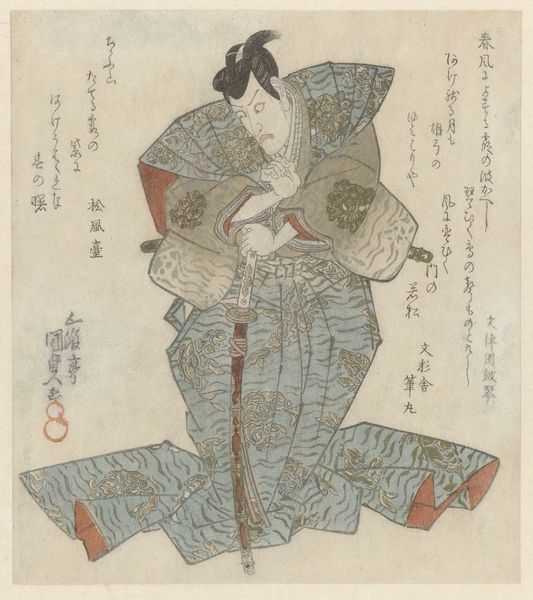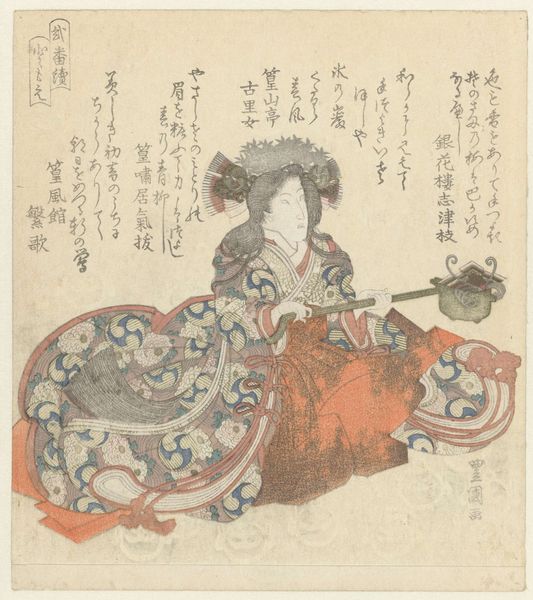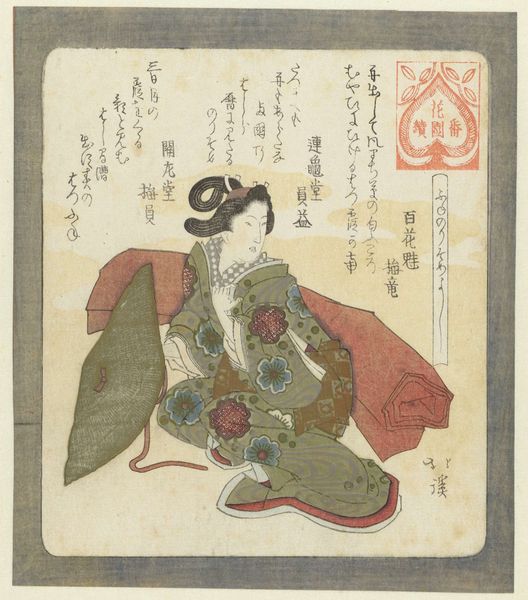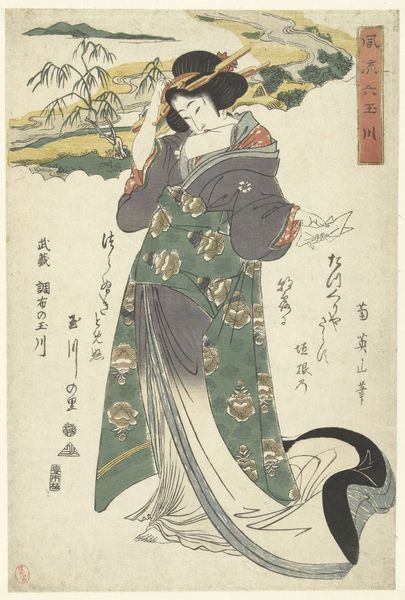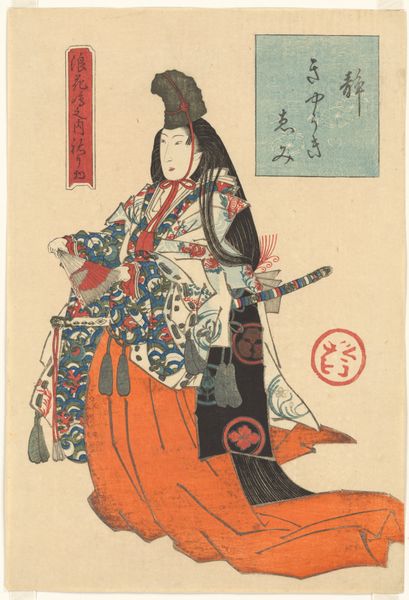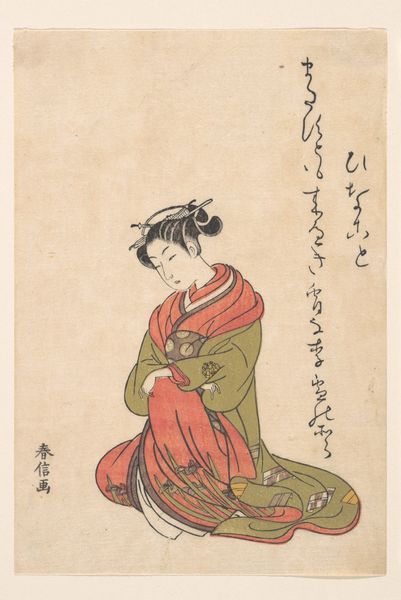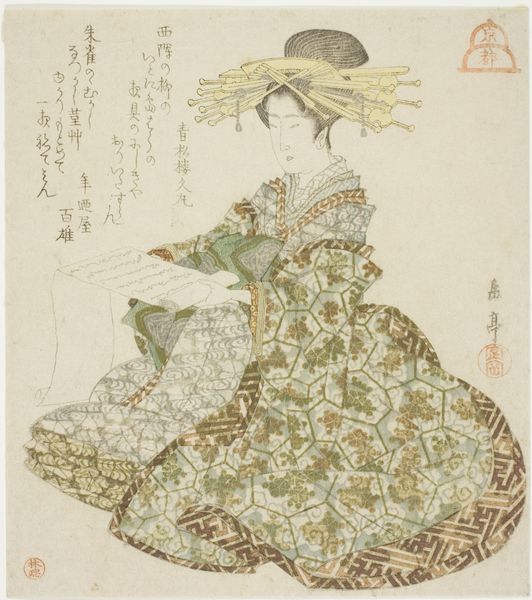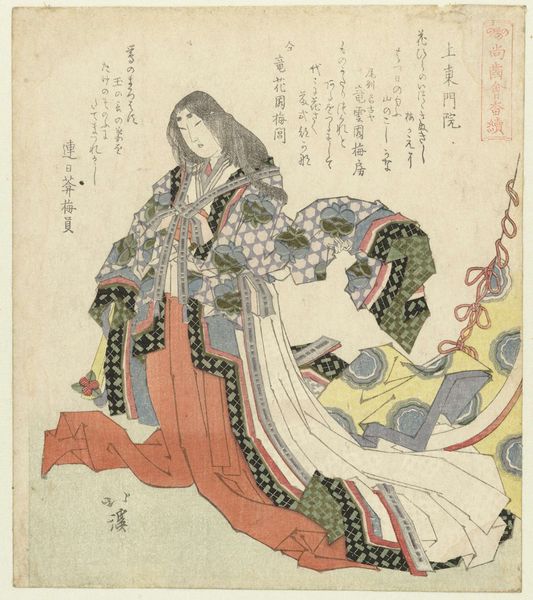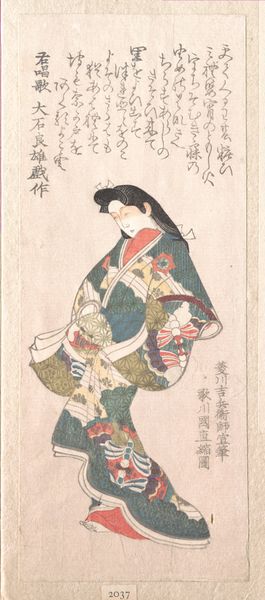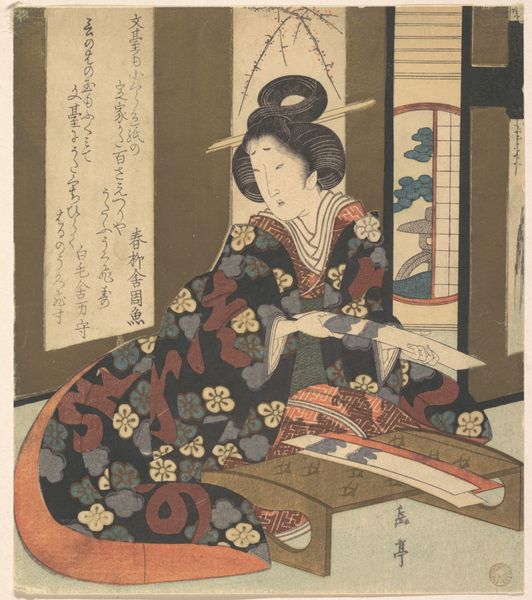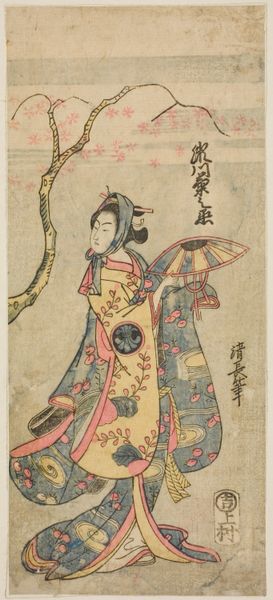
print, textile, woodblock-print
#
portrait
# print
#
asian-art
#
textile
#
ukiyo-e
#
figuration
#
flat colour
#
woodblock-print
#
watercolour illustration
Dimensions: height 202 mm, width 187 mm
Copyright: Rijks Museum: Open Domain
Editor: This woodblock print from the Rijksmuseum, “Vrouw met wierookbrander,” made by Totoya Hokkei around 1800 to 1850, is so serene. I’m really drawn to the bold blocks of flat color, especially the woman's bright red garment. How would you approach interpreting a piece like this? Curator: From a materialist perspective, it's crucial to consider the labor involved in its production. Think about the process of creating a ukiyo-e print – the carving of the woodblocks, the layering of ink, and the role of the artisan in translating the artist's vision. Who was consuming these prints, and how did their social status influence the demand for particular subjects and styles? Editor: So, beyond just the aesthetic, it’s important to understand the economic and social structures that made the print possible. I never thought about it that deeply! Curator: Exactly. We might also examine the symbolism of the incense burner itself. What material is it made from? Its shape, and the act of burning incense all point to a specific ritual or tradition? Are we seeing an idealized depiction, or a more realistic portrayal of daily life? Editor: That makes me wonder about the availability and cost of these materials. It wasn't just about the skill, but also who had access to what resources and knowledge. Curator: Precisely! By questioning the conditions of its creation and reception, we gain a much richer understanding of the artwork’s meaning. It challenges us to see the connections between art, labor, and consumption in Edo-period Japan. Editor: This really shifts my focus. I see how this approach reveals the intricate social dynamics embedded in even seemingly simple images. Thanks for shedding light on this, Curator!
Comments
No comments
Be the first to comment and join the conversation on the ultimate creative platform.


